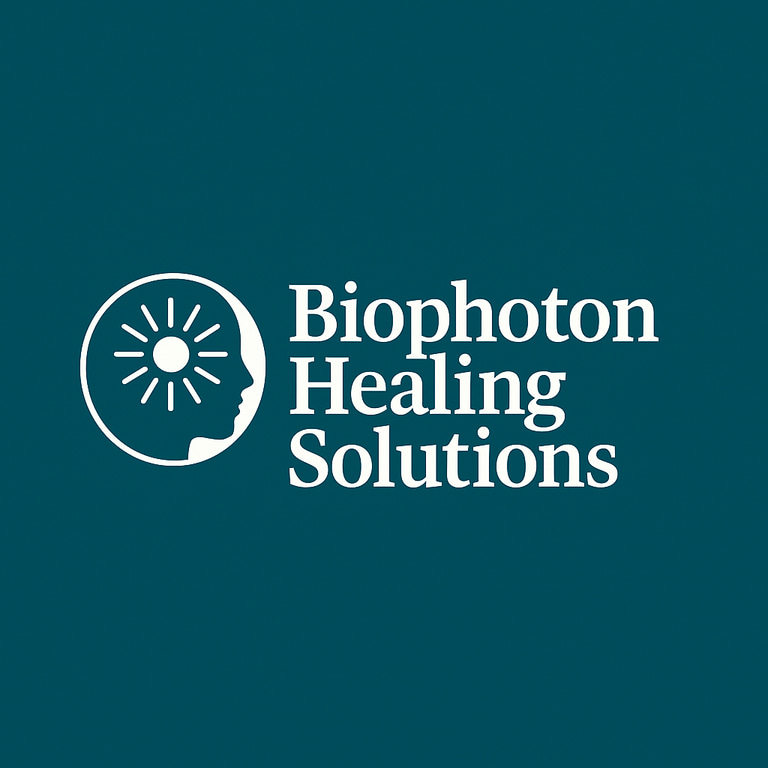Frequently Asked Questions
Biophoton Healing Solutions
This FAQ explains biophotons, how biophoton therapy is used, what to expect, and how to use devices safely at home. Nothing here is medical advice; always consult your healthcare provider.
1) What are biophotons?
Biophotons are ultra-weak light particles naturally emitted by living cells as part of normal metabolism. Researchers study these faint emissions because they appear to relate to cellular energy balance, communication, and overall physiological status.
2) How does biophoton therapy work?
Biophoton therapy exposes the body to a gentle, coherent light-energy environment. The goal is to support your body’s own processes—cellular energy production, recovery, relaxation, and sleep—without drugs or invasive procedures.
3) Is this the same as red-light/LED therapy?
Not exactly. Red-light (photobiomodulation) uses specific external wavelengths (usually red/near-infrared LEDs/lasers). Biophoton therapy focuses on creating a biophoton-rich field intended to complement the body’s natural biolight emissions. Some people use both approaches; they are different but potentially complementary.
4) What results can I realistically expect?
Most users report everyday wellness benefits such as deeper relaxation, better sleep quality, improved comfort, and more steady daytime energy. Responses vary by individual. Biophoton therapy is a wellness modality and is not a treatment or cure for medical conditions.
5) How long before I may notice changes?
Some people feel more relaxed within days; sleep and daytime energy often improve over 2–4 weeks. For broader wellness goals, give it 6–8 weeks of consistent use and track simple markers (sleep quality, energy, mood, activity tolerance).
6) Can biophoton therapy support stem cell health?
Early research and user reports suggest that biophoton/low-level light environments may support the body’s natural regenerative processes. This is an emerging area of study; results are not guaranteed and individual outcomes vary.
7) How do I use a room-based biophoton device safely at home?
Place the device per manufacturer guidance (distance/height), use it in a restful space (bedroom or relaxation area), and allow regular exposure—often during sleep or scheduled rest sessions. Keep devices dry, away from heat sources, and follow all safety instructions.
8) Who should talk to a doctor before using biophoton therapy?
Anyone who is pregnant, has an implanted electronic device (e.g., pacemaker), has a serious medical condition, is undergoing active treatment, or has questions about interactions should consult their healthcare provider first. When in doubt, ask your clinician.
9) Are there side effects?
Biophoton therapy is generally described as gentle and non-invasive. A small number of users report temporary adjustment effects (e.g., unusual vivid dreams, transient fatigue, or “detox-like” feelings) that usually ease as the body adapts. Discontinue use and consult a professional if you experience discomfort.
10) Can I combine biophoton therapy with other wellness practices?
Yes—common pairings include good sleep hygiene, hydration, balanced nutrition, light movement, and stress-reduction practices. If you use other light-based therapies or medical treatments, coordinate with your healthcare provider.
